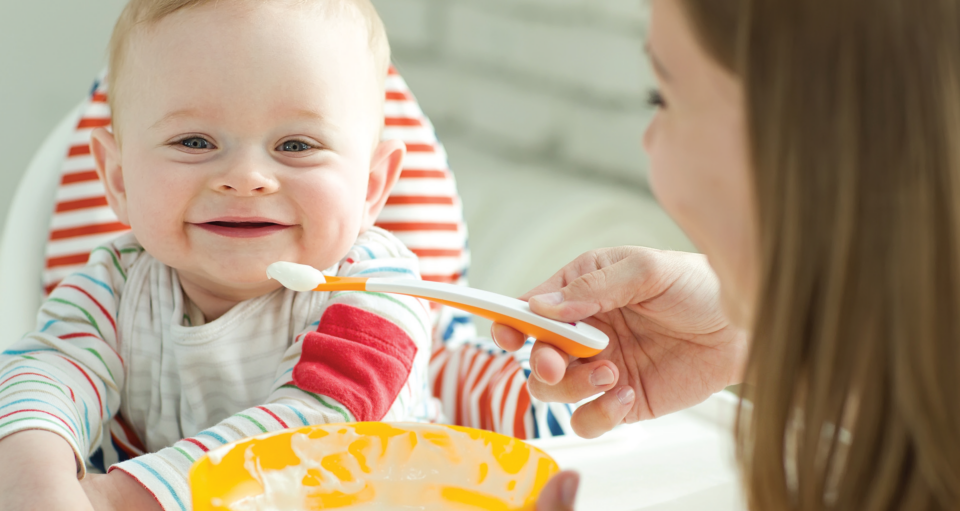You now have the green light from your pediatrician to begin feeding your precious bundle his first foods. This is a big moment for you and your baby, but you have lots of questions: How much? How often? What’s safe? Whether you’re a new or experienced parent, these questions are normal because as time changes, so do recommendations on everything.
Nick DeBlasio M.D., MEd medical director, Pediatric Primary Care Center at Cincinnati Children’s Hospital Medical Center, says that introducing solid foods between ages 4 – 6 months is OK, but aiming toward the 6-month milestone is the official recommendation by the American Academy of Pediatrics. But why?
“The main thing we look for is really from a developmental standpoint, are the kids ready?” DeBlasio says. “Not only are they interested in eating it, but are they able to physically do it?”
Here are some ways you can tell if Baby is ready for that jar of bananas: He doesn’t have the “tongue thrusting” motion; and he has enough neck and head control to sit up and feed. If he does seem to be pushing his food away (aka, tongue thrusting), take a break for a couple weeks and try, try again.
Baby’s First Foods
So what’s on the menu? There really is no good science behind which foods are the best, according to DeBlasio – green vegetables or orange, fruit or no fruit first — everyone and every baby is different. However, for those first-food introductions, it’s best to start off with baby rice or grain cereal and single-ingredient foods. Before introducing any new foods to his palette, see how he tolerates those first foods for about three-to-five days and continue the cycle.
“Basically start small, and go slowly,” suggests DeBlasio. “Go through your jar foods in no particular order.”
The main reason for this is to make sure that if your baby has some sort of reaction, you can pinpoint which food was the culprit. DeBlasio also says to avoid feeding directly out of the jar as this puts Baby at risk to bacteria exposure. This goes for homemade baby food, too. These days, there has been an increase in families wanting to make their own foods due to the concern of heavy metals in jarred food. According to DeBlasio, there are pluses and minuses to both. The plus side is that you know exactly what is going into his food; and the downside is the time commitment. It really comes down to what works for your busy household.
Feeding Time
Babies let you know when they’re hungry. Paying close attention to his eating cues will help tremendously as you begin to put together a feeding schedule.
“Every baby honestly is a little bit different,” DeBlasio says. “Starting off at around 6 months I’ll give the kids two meals a day and as they get closer to 9 months, I start to transition to three meals a day.”
Whether in-between breast or bottle feeding or after, however you do it depends on his preferences.
“The one thing I don’t recommend is doing solid foods right before a kid is about to breastfeed or take formula,” he continues. “Typically they will be really agitated because they are hungry. The feeding does require some coordination.”
Keep in mind that the bulk of his nutrition is coming from breast milk or formula — that is most important to make sure he is getting the nutrients and calories that he needs.
“It really comes down to what works best for that particular baby, and what works best for their schedule,” DeBlasio says. “Don’t drive yourself too crazy, be patient and let the baby get used to things. It can be a big switch.”
Read More:





